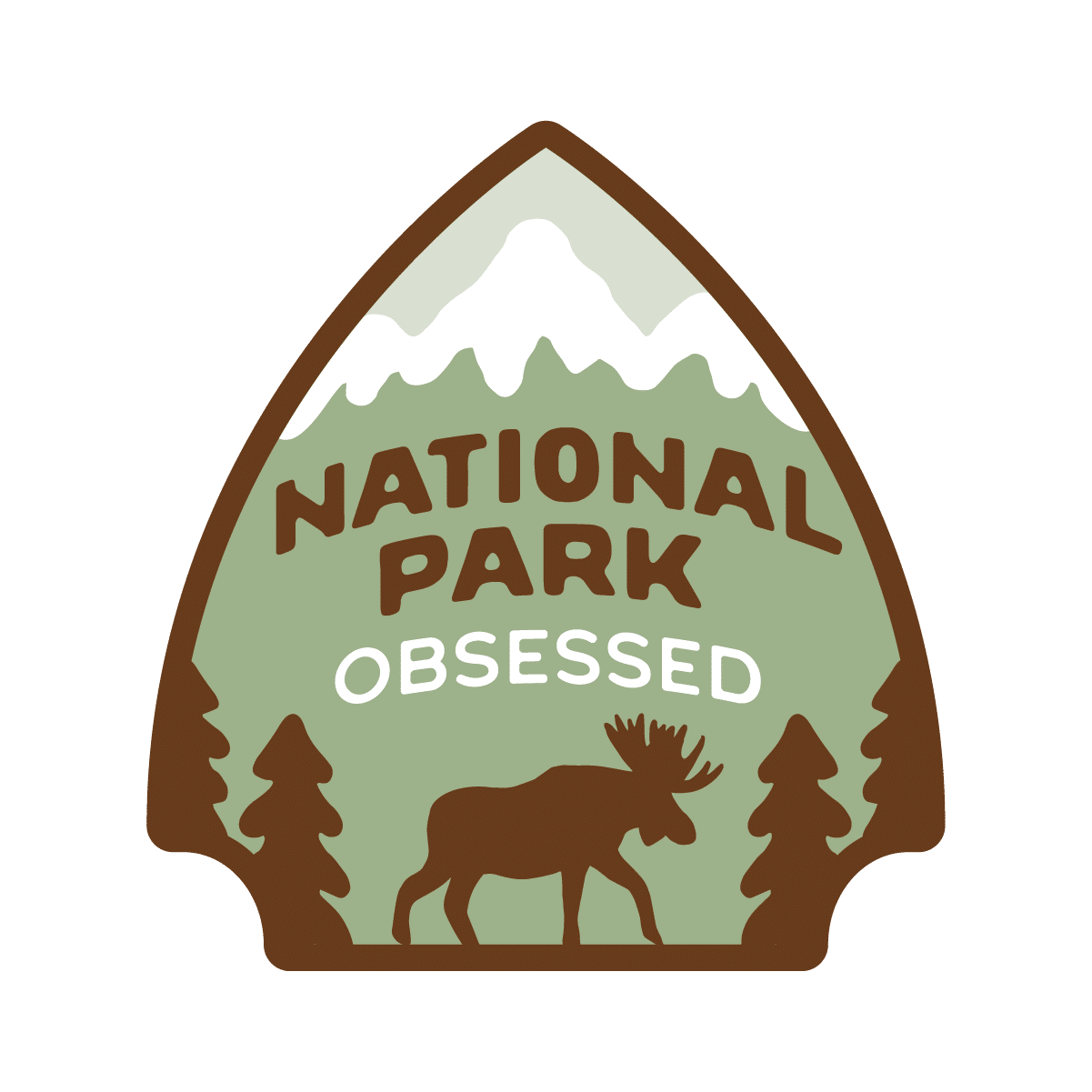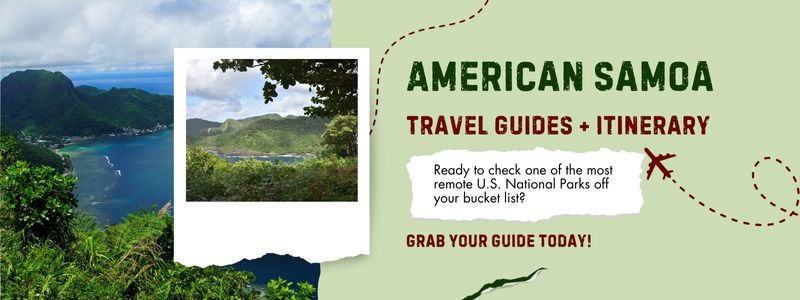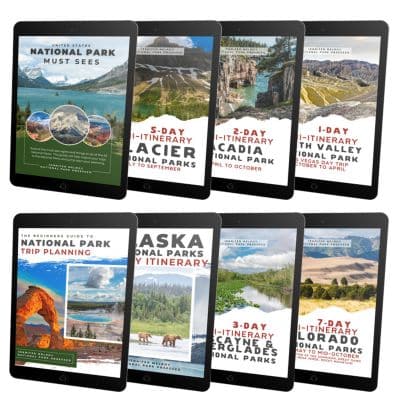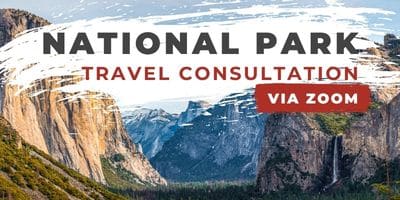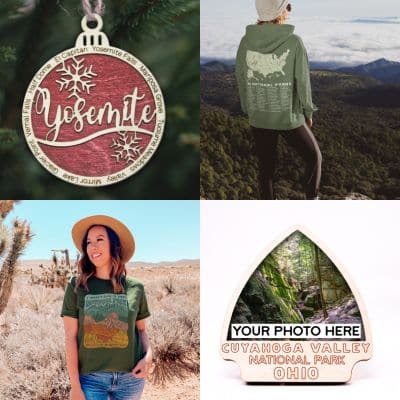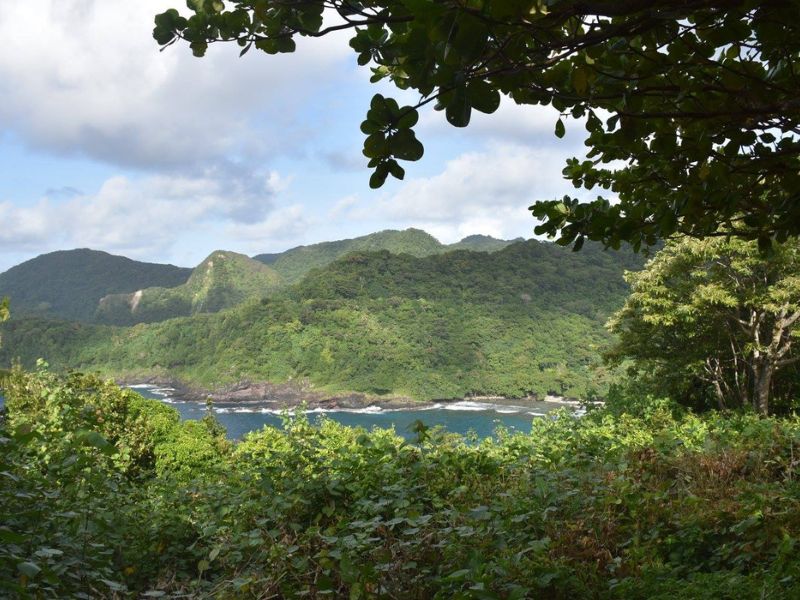
25+ Astonishing National Park Of American Samoa Facts & Statistics
- Jennifer Melroy
- Last Modified August 17, 2025
- First Published on August 17, 2025
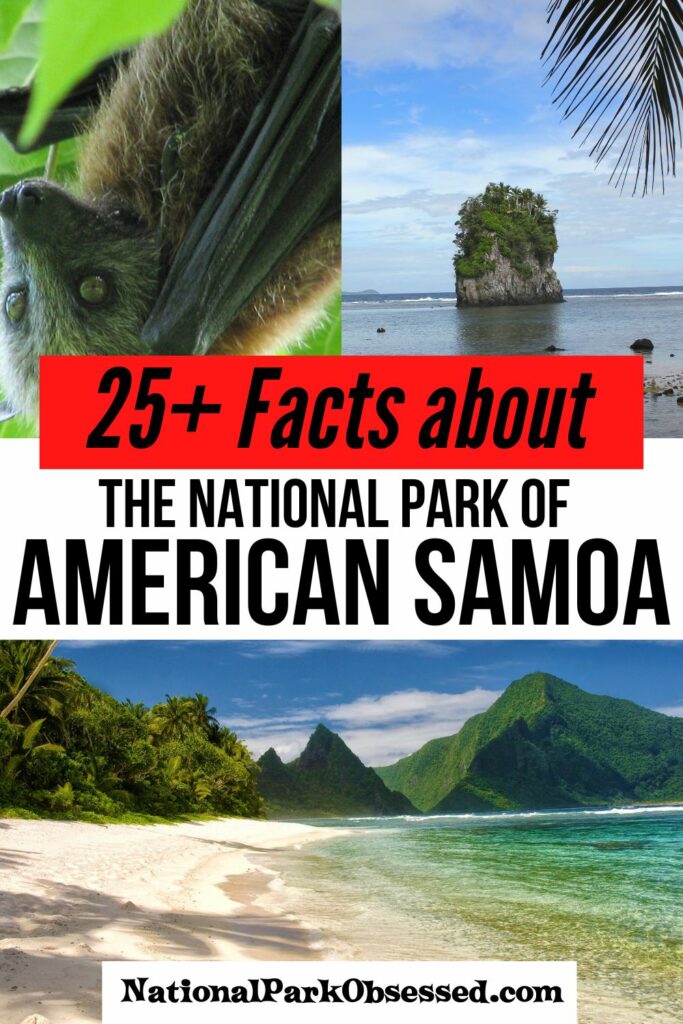
The National Park of American Samoa is one of the most remote and extraordinary destinations in the U.S. National Park System. Spanning four volcanic islands, Tutuila, Ta‘ū, Ofu, and Olosega, this tropical paradise is the only U.S. National Park located in the Southern Hemisphere. From lush rainforests and pristine coral reefs to rare wildlife and vibrant Samoan culture, the park offers a wealth of wonders waiting to be discovered. In this guide, we’ll share astonishing facts and fascinating statistics about the National Park of American Samoa that reveal its unique geography, biodiversity, and cultural heritage.
So let’s dig into 25+ Astonishing National Park of American Samoa Facts & Statistics.
Table of Contents
This post may contain affiliate links, meaning if you book or buy something through one of these links, I may earn a small commission at no extra cost to you! Read the full disclosure policy here.
American Samoa Geography Facts
American Samoa is primarily part of the Samoan Island archipelago in the South Pacific.
American Samoa is composed of four volcanic islands and two uninhabited coral atolls, located approximately halfway between Hawaii and New Zealand. The four islands are Tutuila, Ta‘ū, Ofu, and Olosega. Swains Island and Rose Atoll are small coral atolls.
The islands and the Rose Atoll are part of the Samoan Island archipelago, while Swains Island is part of the Tokelau volcanic island group.
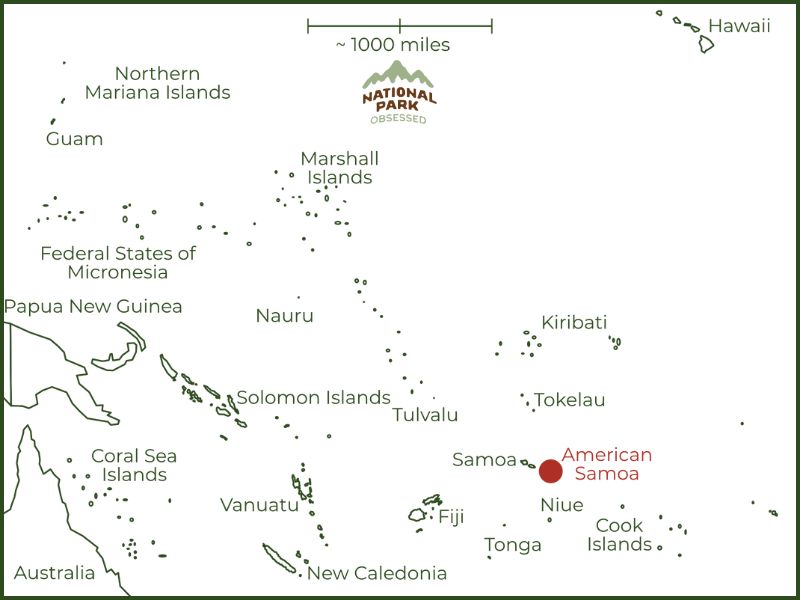
American Samoa and Samoa are a day apart.
Despite being 50 miles apart, American Samoa and Samoa are on different sides of the International Date Line (IDL). American Samoa is on the eastern side of the IDL, along with Hawaii and the rest of the United States, while Samoa is on the western side of the IDL. This means when it’s, say, Monday morning in American Samoa, it’s already Tuesday morning in Samoa. If we are getting technical, the two islands are twenty-three hours apart in time zones, with Samoa being UTC+13 and American Samoa being UTC−11.
American Samoa experiences nearly equal day and night year-round.
Being only 14 degrees south of the equator, American Samoa averages 12 hours of sunlight year-round. The June solstice (June 20 or 21) has 11 hours and 17 minutes of daylight, and the December solstice (December 21 or 22) has 12 hours and 58 minutes of daylight.
The islands are very young geologically speaking.
American Samoa is considered geologically young because its islands were formed relatively recently by volcanic activity as the Pacific tectonic plate moved over the Samoan hotspot. Tutuila is estimated to be 1.5 million years old, and the Manu‘a Islands (Ta‘ū, Ofu, and Olosega) are between 100,000 and 500,000 years old. Rose Atoll formed atop an extinct volcano and is estimated to be 1-2 million years old. Comparatively, Hawaii’s islands range in age from 5.1 million years old (Kauai) to 400,000 years old (the Big Island).
The Samoan hotspot remains active, as evidenced by the 1975 discovery of the Vailuluʻu seamount. This seamount is 13,800 ft (4,200 m) tall, and its summit is located at a depth of 1,940 ft (590 m). Vailuluʻu is an active volcano with frequent earthquakes and eruptions. Radiometric dating of rocks dredged from the seamount suggests that the last eruption was between 2001 and 2004.
There is also some evidence that the Samoan hotspot is feeding a second seamount to the southwest of Vailuluʻu called Malumalu. Radiometric dating indicates that Malumalu has erupted within the last 8,000 years.
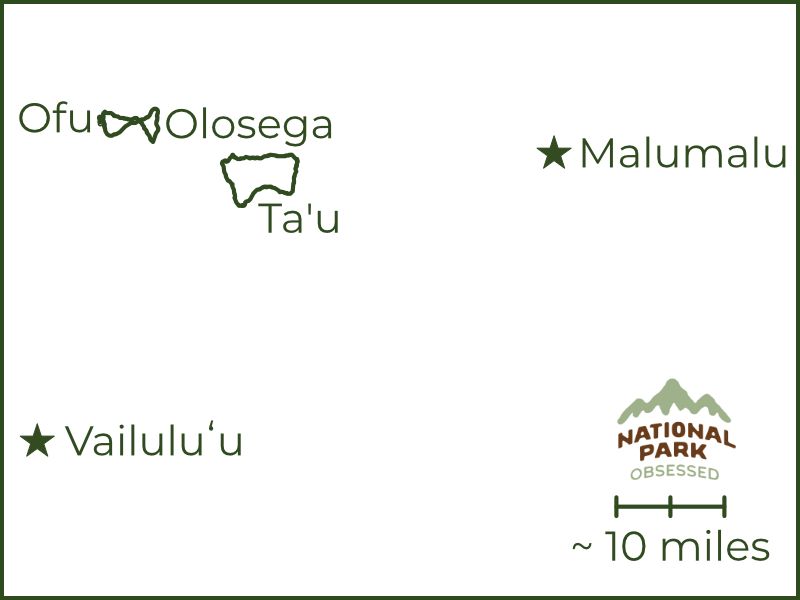
The highest point is Lata Mountain at 3,170 ft.
The highest point in American Samoa is Lata Mountain, which rises 3,170 feet (965 meters) above sea level on the island of Ta‘u in the Manu‘a Islands. Lata Mountain is the high point along the Mataalaosagamai (say that five times fast) Ridge. Mataalaosagamai Ridge dominates the south side of Ta’u.
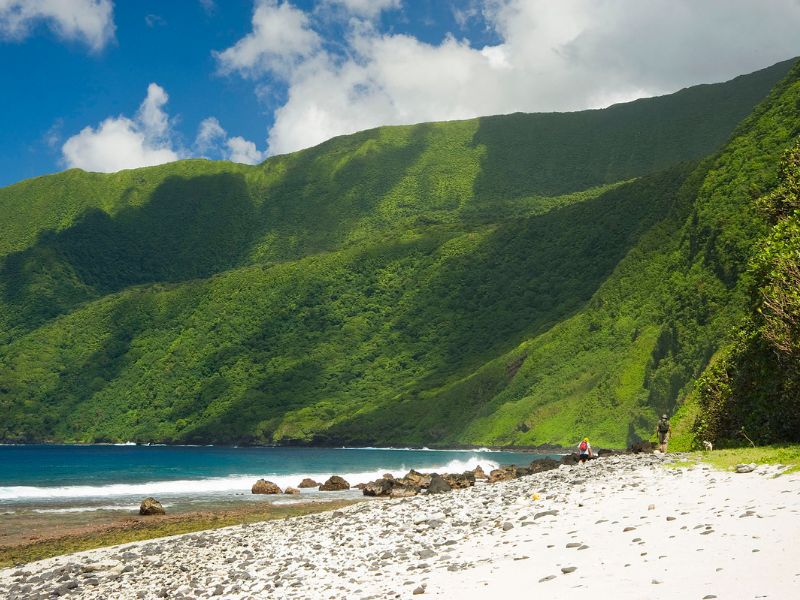
The islands are covered in tropical rainforests.
All four of American Samoa’s islands are blanketed in lush tropical rainforests that thrive in the warm, humid climate and abundant rainfall of the South Pacific. The rainforest stretches from the shoreline to the mountain summits. Most tropical plant species have arrived via chance dispersal.
Fringing reefs dominate the coastal ecosystem.
Fringing reefs dominate American Samoa’s coastal ecosystem. These reefs grow directly from the shoreline, creating a narrow but rich band of coral that teems with tropical fish, sea turtles, and other marine life. They serve as vital natural barriers, protecting the coasts from erosion and storm surges while supporting local fishing and subsistence lifestyles. In the crystal-clear waters of these reefs, hard corals, soft corals, and sponges flourish alongside a dazzling array of reef species.
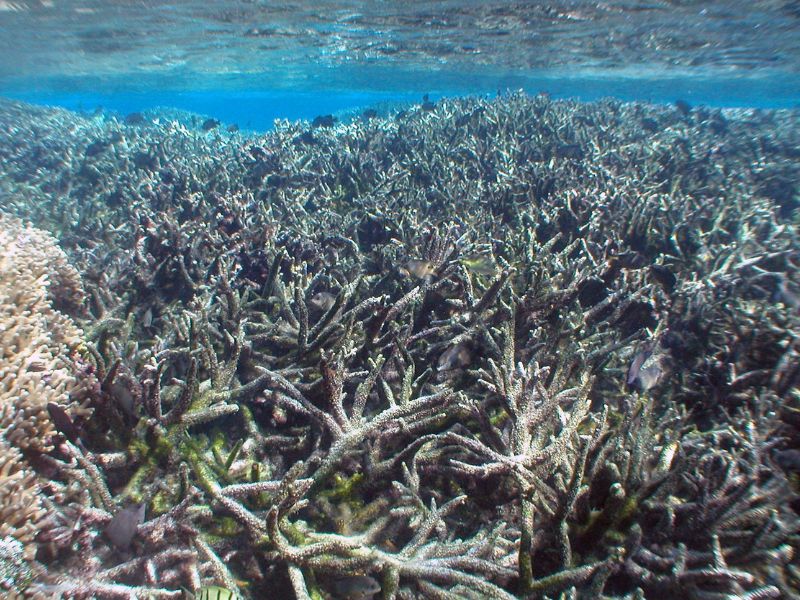
Tutuila was an important U.S. naval base in the South Pacific during World War II.
During World War II, Tutuila played a vital role as a strategic U.S. naval base in the South Pacific. Its deep, sheltered harbor at Pago Pago made it an ideal location for refueling, resupplying, and repairing ships operating across the vast ocean theater. The island was fortified with coastal defense guns, lookout posts, and other military infrastructure to guard against potential attacks. Many of these historic sites, including gun emplacements and bunkers, remain today.
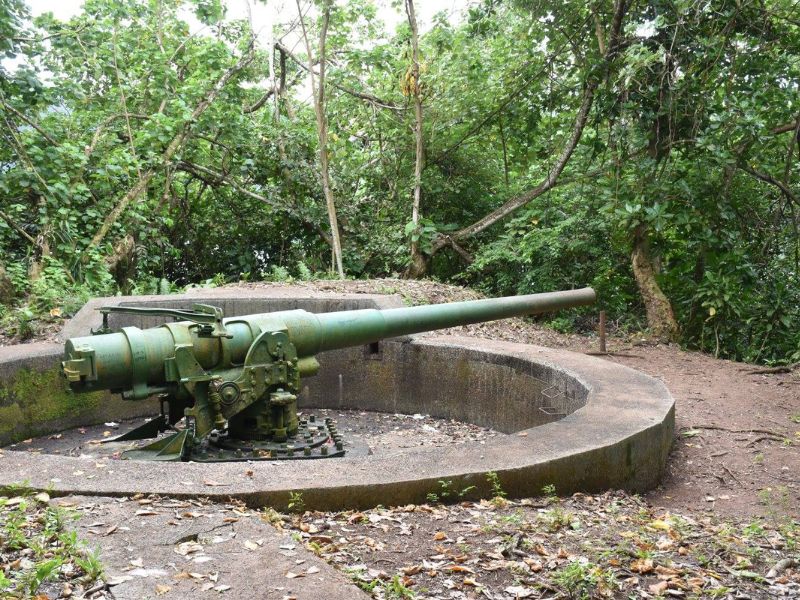
National Park of American Samoa Facts
It is the only National Park not owned by the US Government.
The National Park of American Samoa is unique in the U.S. National Park System because it is the only park not owned by the federal government. Instead, the land is leased from local villages due to the fact that American Samoa still practices communal land ownership. This arrangement honors traditional land tenure systems while allowing the National Park Service to protect the islands’ rich natural and cultural resources. If the lease isn’t renewed in 2043, then the National Park of American Samoa will cease to be a National Park of the United States.
The Park Is Co-Managed By The National Park Service & Local Government Of American Samoa
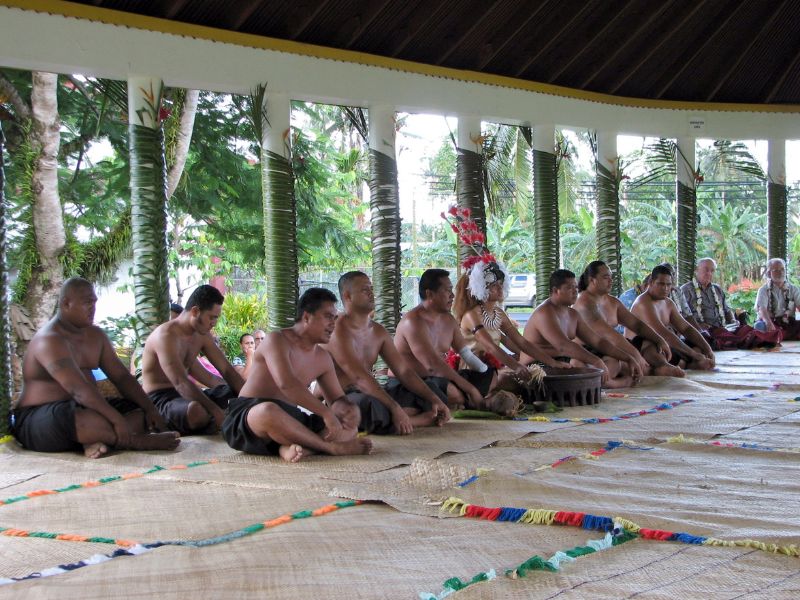
Due to the unique ownership arrangement, the park is co-managed between the National Park Service (NPS) and the local government of American Samoa. This enables greater cooperation between local leaders and park officials to protect and manage the park’s resources while preserving local access and cultural connections.
The National Park of American Samoa was established on October 31, 1988.
The National Park of American Samoa was established on October 31, 1988, by Public Law 100-571.
The purpose of this Act is to preserve and protect the tropical forest and archaeological and cultural resources of American Samoa, and of associated reefs, to maintain the habitat of flying foxes, preserve the ecological balance of the Samoan tropical forest, and, consistent with the preservation of these resources, to provide for the enjoyment of the unique resources of the Samoan tropical forest by visitors from around the world.
~~Public Law 100-571
Normally, when a new National Park is created, the NPS purchases the land for the park if the land area isn’t already federally owned. However, American Samoa presented a unique challenge due to its communal land system. It took about 5 years for NPS and the government of American Samoa to resolve the land ownership issue. On September 10, 1993, NPS entered into a 50-year lease for the parkland, with the option to extend for an additional 50 years. As of 2015, NPS pays $601,500 per year to the landowners.
It Is The Only National Park In The United States Located South Of The Equator.
The National Park of American Samoa holds the distinction of being the only U.S. national park located south of the equator. Situated in the heart of the South Pacific, about 2,600 miles southwest of Hawaii and 1,600 miles northeast of New Zealand.
The National Park of American Samoa is one of two National Parks in U.S. territories.
The National Park of American Samoa is one of only two U.S. national parks located in territories, rather than states; the other is the Virgin Islands National Park in St. John, U.S. Virgin Islands. While these two parks hold the formal “National Park” designation, several other U.S. territories are also home to important National Park Service sites.
The U.S. Virgin Islands also include the Virgin Islands Coral Reef National Monument, which safeguards extensive marine habitats. In Guam, the War in the Pacific National Historical Park preserves World War II battlefields and fortifications. In Puerto Rico, the San Juan National Historic Site protects Spanish colonial forts and city walls.

The Park is spread across three islands.
The National Park of American Samoa is spread across the islands of Tutuila, Ta‘ū, and Ofu. Each unit offers a unique landscape and ecosystem. On Tutuila, the park protects dramatic volcanic ridges, lush rainforests, and coastal reefs. Ta‘ū is home to Lata Mountain and vast tracts of untouched rainforest. Ofu is especially famous for its pristine coral reef, often regarded as one of the most beautiful snorkeling destinations in the world.
The National Park of American Samoa is one of the smallest National Parks.
The National Park of American Samoa is the third smallest National Park. The park encompasses approximately 9,500 acres of land and 4,000 acres of marine area. The land portion protects rugged volcanic mountains, lush tropical rainforests, and traditional Samoan villages across Tutuila, Ta‘ū, and Ofu. The marine area encompasses vibrant fringing coral reefs and lagoons, which are home to some of the most diverse and healthiest reef ecosystems in the world. Together, the park safeguards both land and sea, highlighting the deep connection between American Samoa’s people, its tropical landscapes, and the surrounding Pacific Ocean.
The Park is home to one of the world’s top beaches.
Ofu Beach regularly makes the list as one of the world’s top beaches. This breathtaking stretch of sand is celebrated for its dazzling beauty, with soft white sand, clear turquoise water, and dramatic volcanic peaks rising in the background. Ofu’s coral reef is among the healthiest and most diverse on Earth. Snorkelers can experience extraordinary underwater visibility and encounter vibrant coral gardens, tropical fish, and sea turtles in a pristine environment. Its rare combination of unspoiled scenery and world-class snorkeling has earned Ofu Beach recognition as one of the most beautiful and secluded beaches on the planet.
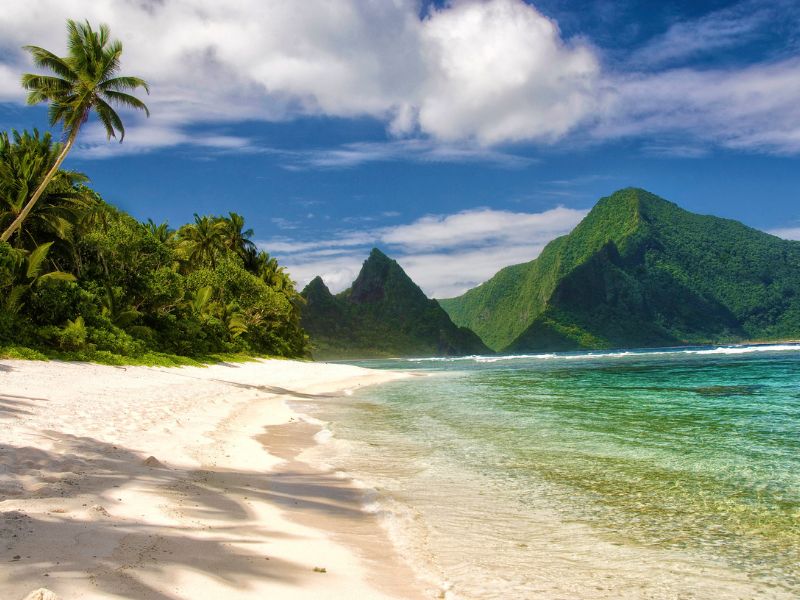
The National Park of American Samoa is one of the least visited National Parks.
The National Park of American Samoa, for obvious reasons, is one of the least-visited national parks. That said, visibility has varied wildly over the years, even factoring in the COVID pandemic. A primary factor in wild variation in visitation is the number of cruise ships that visit American Samoa.
At the time of writing, American Samoa is only visited by mid to extra-large cruise ships that carry between 490 and 3,223 passengers. This means that when a cruise ship is in Pago Pago Harbor, the park has more visitors in that one day than it does for the entire rest of the month combined. The 2022 drop in visitation is due to renovations at the harbor of Pago Pago, which was not open to cruise ships during this time.
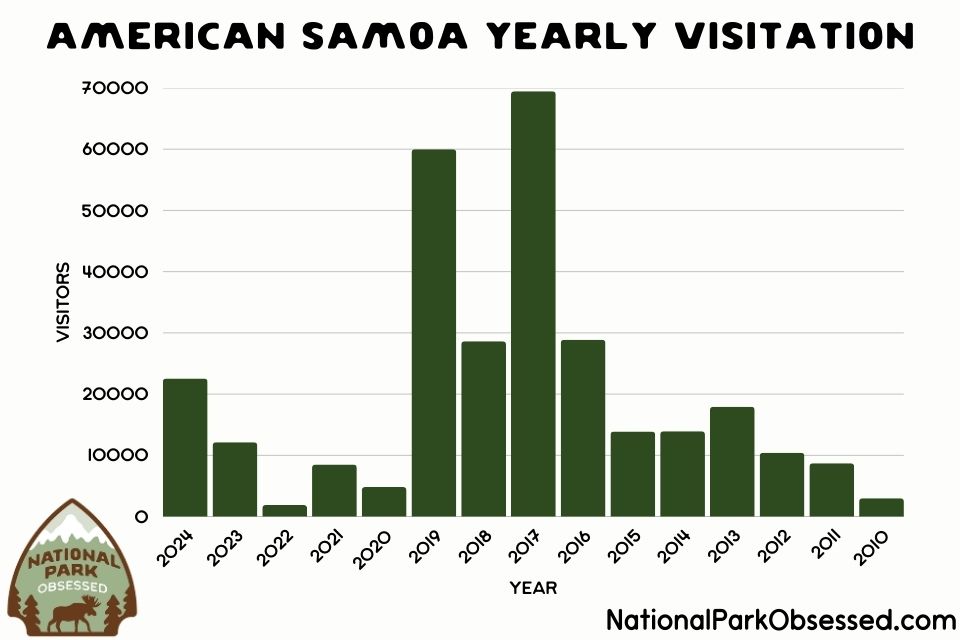
American Samoa Wildlife Facts
The only native land mammals in American Samoa are bats; all others were introduced by humans.
The only native land mammals found in American Samoa are bats. The islands were home to three types of bat. The Pe’a Vao (Samoan Fruit Bat) and the Pe’a fanua (White-Naped Fruit Bat) are regularly seen on the islands, while the Pacific sheath-tailed bat is believed to be locally extinct. The fruit bats play a critical ecological role by pollinating plants and dispersing seeds throughout the islands’ rainforests.
All other land mammals in American Samoa—such as pigs, dogs, and rats—were introduced by humans, either intentionally for food and companionship or unintentionally through early voyages and trade.
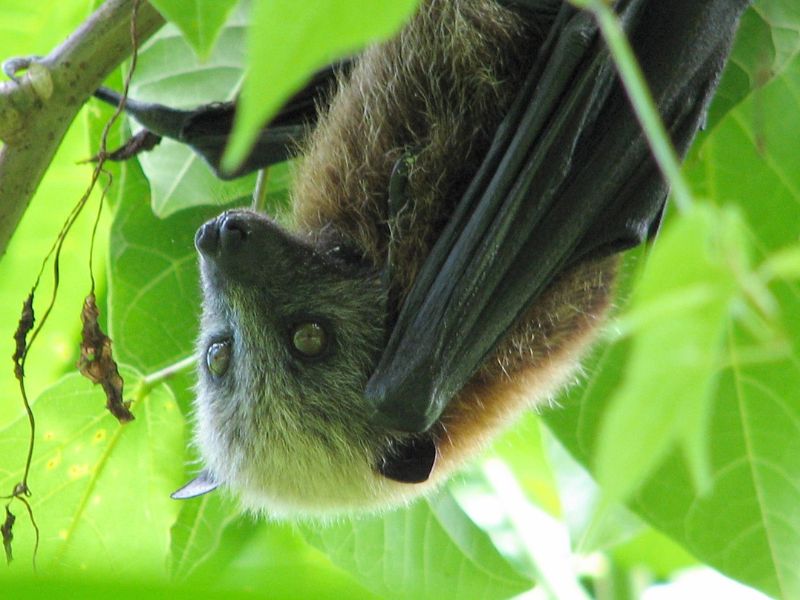
Home to some of the most intact reefs in the National Park System.
The National Park of American Samoa is home to some of the most pristine coral reefs in the entire National Park System. Stretching across about 4,000 acres of protected marine habitat, these reefs remain remarkably intact compared to many around the world, thanks to the park’s remote location and lower levels of development and tourism. The reefs shelter an incredible variety of marine life, including hundreds of species of coral and fish, as well as sea turtles, giant clams, and reef sharks.
There are over 250 coral species.
The coral reefs of the National Park of American Samoa are exceptionally rich, harboring over 250 species of coral—a diversity greater than that found in most other U.S. national parks. This incredible variety includes both hard and soft corals, creating vibrant reef structures that provide food and shelter for countless marine species.
American Samoa is home to some of the largest coral heads in the world.
While outside the National Park, off the western coast of Ta’u, there is an area of coral heads known as the Valley of the Giants. The largest of these coral heads is known as Big Momma. She is more than 500 years old and over 19 feet high, with a circumference of 134 feet in 60 feet of water.
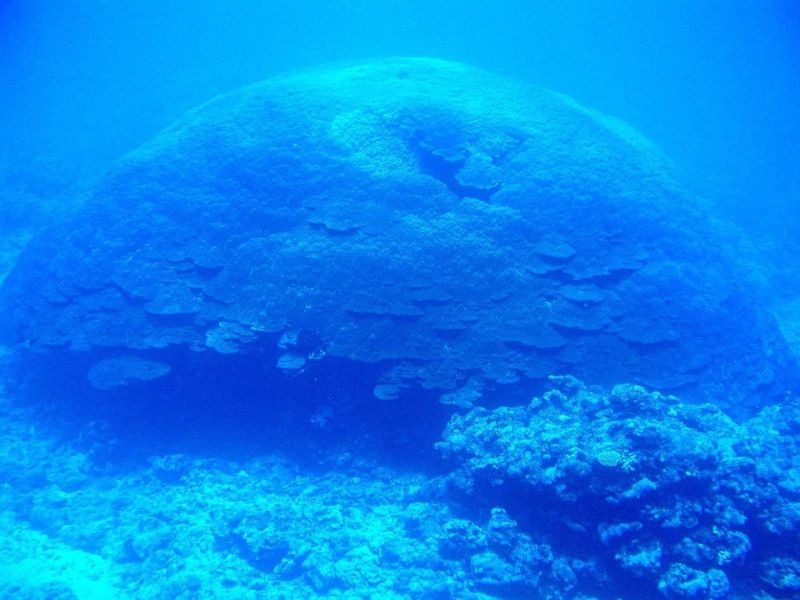
There are over 950 species of fish, including colorful reef fish like the parrotfish and the damselfish.
The reefs are home to over 950 species of fish thriving in its waters. Among these are some of the most iconic and colorful reef fish, including the brilliantly hued parrotfish, known for their role in maintaining coral reef health by grazing on algae, and the lively damselfish, often spotted darting among coral branches in vibrant flashes of color.
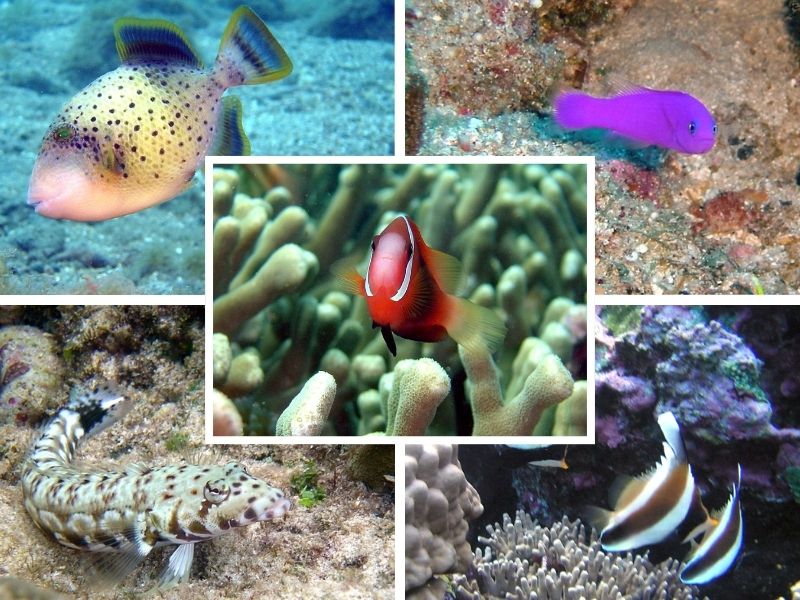
Massive Giant Clams can be seen in the reefs, some over 4 feet across.
While snorkeling, you can find massive giant clams that can grow to more than 4 feet across. These enormous bivalves, belonging to the Tridacna genus, are among the largest living mollusks in the world and can weigh several hundred pounds. Their colorful mantles often display vivid blues, greens, and purples.
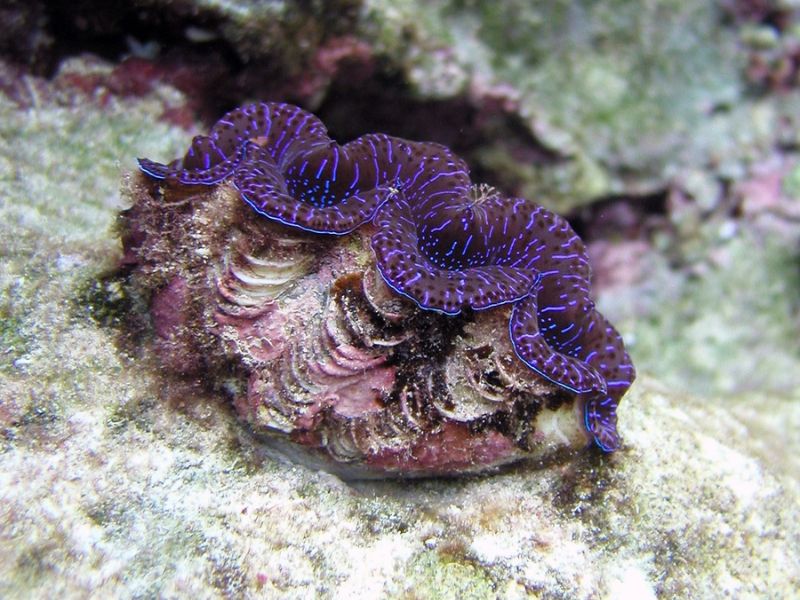
The waters are home to a living fossil.
The nautilus is a truly extraordinary marine animal. They have survived in the oceans for more than 500 million years with little evolutionary change and are often described as a “living fossil.” During the day, it typically stays deep—often 600 to 1,200 feet below the surface—and at night it rises toward shallower reef slopes to hunt.
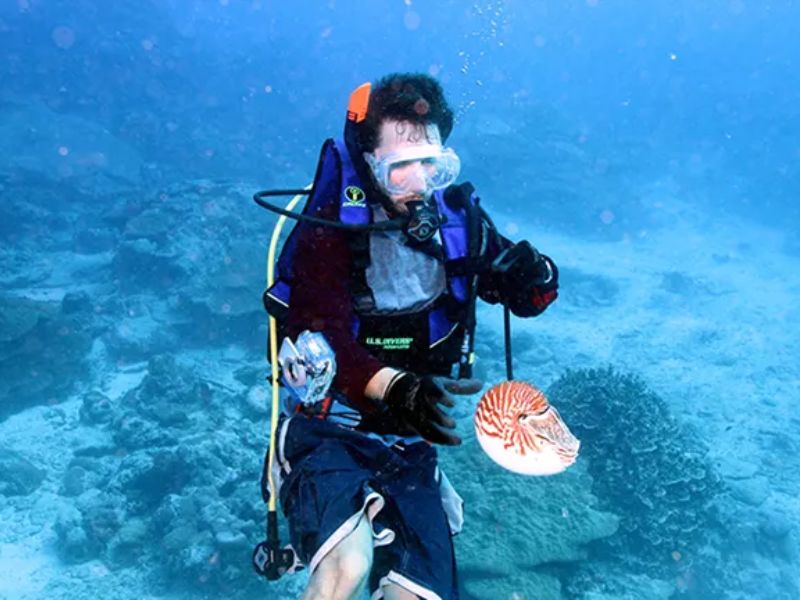
There are over 35 resident land and seabird species that call the islands home.
American Samoa is often called a birdwatcher’s paradise, with more than 35 resident land and seabird species inhabiting the islands. The lush tropical rainforests provide nesting grounds for land birds such as the Pacific pigeon and the many-colored fruit dove, while the dramatic sea cliffs and offshore islets support large colonies of seabirds, including red-footed boobies, frigatebirds, and terns.
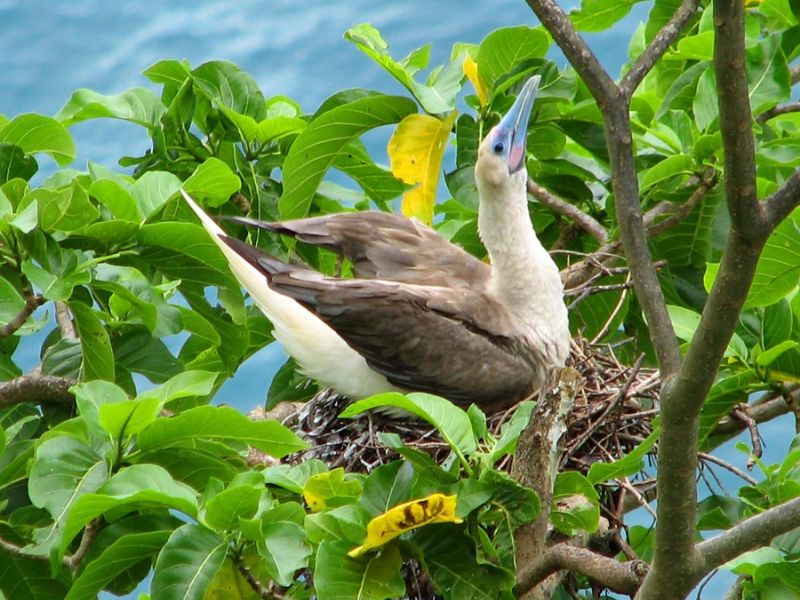
Humpback whales migrate to Samoan waters each year to breed and give birth.
Each year, humpback whales undertake one of the most remarkable migrations on Earth, traveling thousands of miles from their cold feeding grounds in places like Alaska to the warm tropical waters of Samoa. These nutrient-rich yet calm seas provide the perfect environment for whales to breed, give birth, and nurse their calves. From around July to October, visitors to American Samoa have the chance to witness these giants of the ocean breaching, tail-slapping, or gliding gracefully along the coastline.
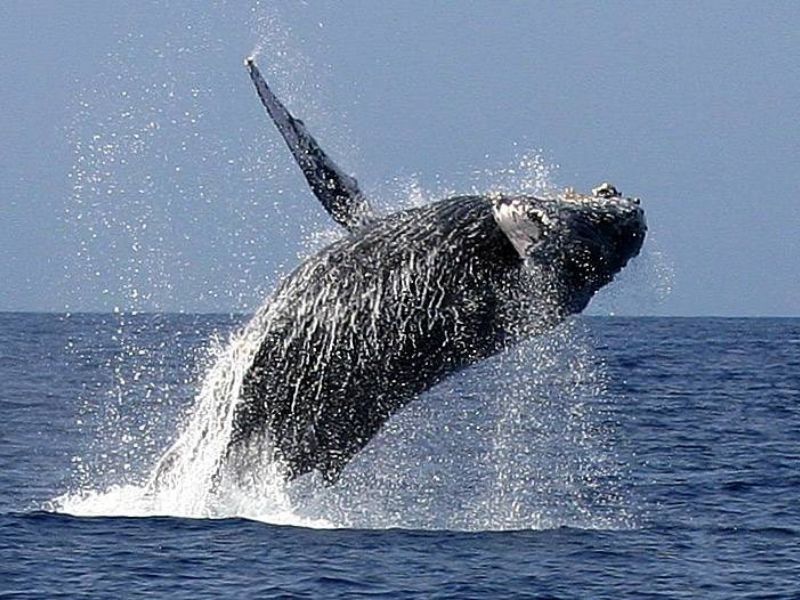
Summary of the National Park of American Samoa Facts
- American Samoa is primarily part of the Samoan Island archipelago in the South Pacific.
- American Samoa and Samoa are a day apart.
- American Samoa experiences nearly equal day and night year-round.
- The islands are very young geologically speaking.
- The highest point is Lata Mountain at 3,170 ft.
- The islands are covered in tropical rainforests.
- Fringing reefs dominate the coastal ecosystem.
- Tutuila was an important U.S. naval base in the South Pacific during World War II.
- It is the only National Park not owned by the US Government.
- The Park Is Co-Managed By The National Park Service & Local Government Of American Samoa
- The National Park of American Samoa was established on October 31, 1988.
- It Is The Only National Park In The United States Located South Of The Equator.
- The National Park of American Samoa is one of two National Parks in U.S. territories.
- The Park is spread across three islands.
- The National Park of American Samoa is one of the smallest National Parks.
- The Park is home to one of the world’s top beaches.
- The National Park of American Samoa is one of the least visited National Parks.
- The only native land mammals in American Samoa are bats; all others were introduced by humans.
- Home to some of the most intact reefs in the National Park System.
- There are over 250 coral species.
- American Samoa is home to some of the largest coral heads in the world.
- There are over 950 species of fish, including colorful reef fish like the parrotfish and the damselfish.
- Massive Giant Clams can be seen in the reefs, some over 4 feet across.
- The waters are home to a living fossil.
- There are over 35 resident land and seabird species that call the islands home.
- Humpback whales migrate to Samoan waters each year to breed and give birth
Pin for Later: 25+ Astonishing National Park Of American Samoa Facts & Statistics

Jennifer Melroy
Hi, I'm Jennifer!
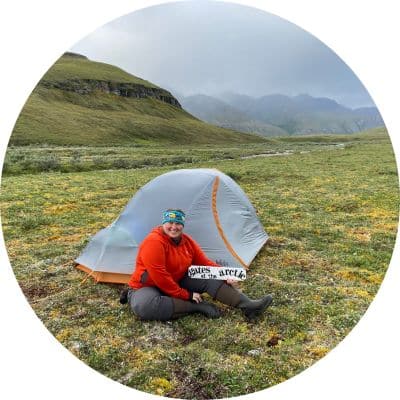
Welcome to the wonderful world of National Parks. I'm here to help you plan your NEXT amazing adventure through the United States National Parks and beyond. I want the national parks to be accessible to all.
I live in Tennessee, and when I'm home, you can find me hiking in the Smokies and the Cumberland Plateau.
58/63 National Parks
250+/423 National Park Units
Want to know more? Start Here.
ACKNOWLEDGEMENT OF LAND
On this site, we promote travel to the United States and beyond that are the traditional lands of Indigenous and First Nations peoples.
With respect, I make a formal land acknowledgment, extending my appreciation and respect to these lands’ past and present people.
To learn more about the people who call these lands home, I invite you to explore Native Land.
DISCLAIMER
National Park Obsessed assumes no responsibility or liability for any errors or omissions in the content of this site (NationalParkObsessed.com). The information contained in this site is provided with no guarantees of completeness, accuracy, usefulness or timeliness. You are encouraged to conduct your own due diligence before acting on the information provided on this site and should not rely on the opinions expressed here.
There is an inherent risk in all outdoor recreation activities, the reader assumes all responsibility for their own personal safety.
DISCLOSURE
We are a participant in the Amazon Services LLC Associates Program, an affiliate program designed to provide a means for us to earn fees by linking to Amazon.com and affiliated sites.
Privacy Policy • About Us • Contact
Select stock photography provided depositphotos
Copyright ©2023 National Park Obsessed, LLC
